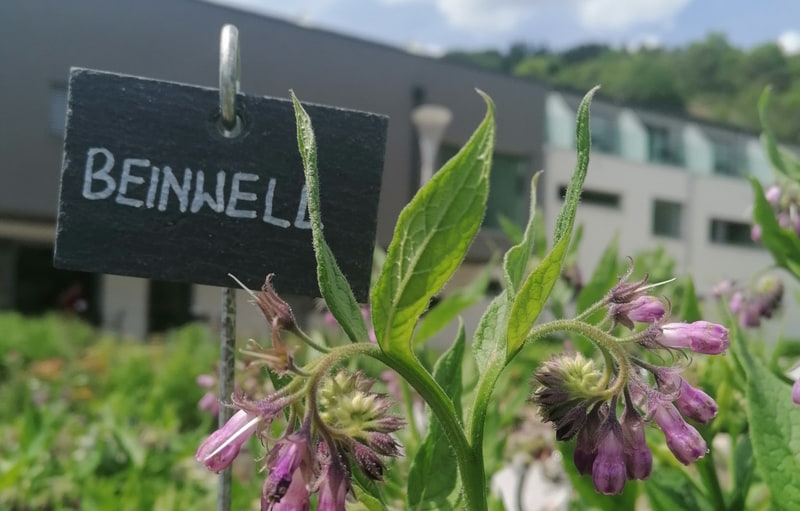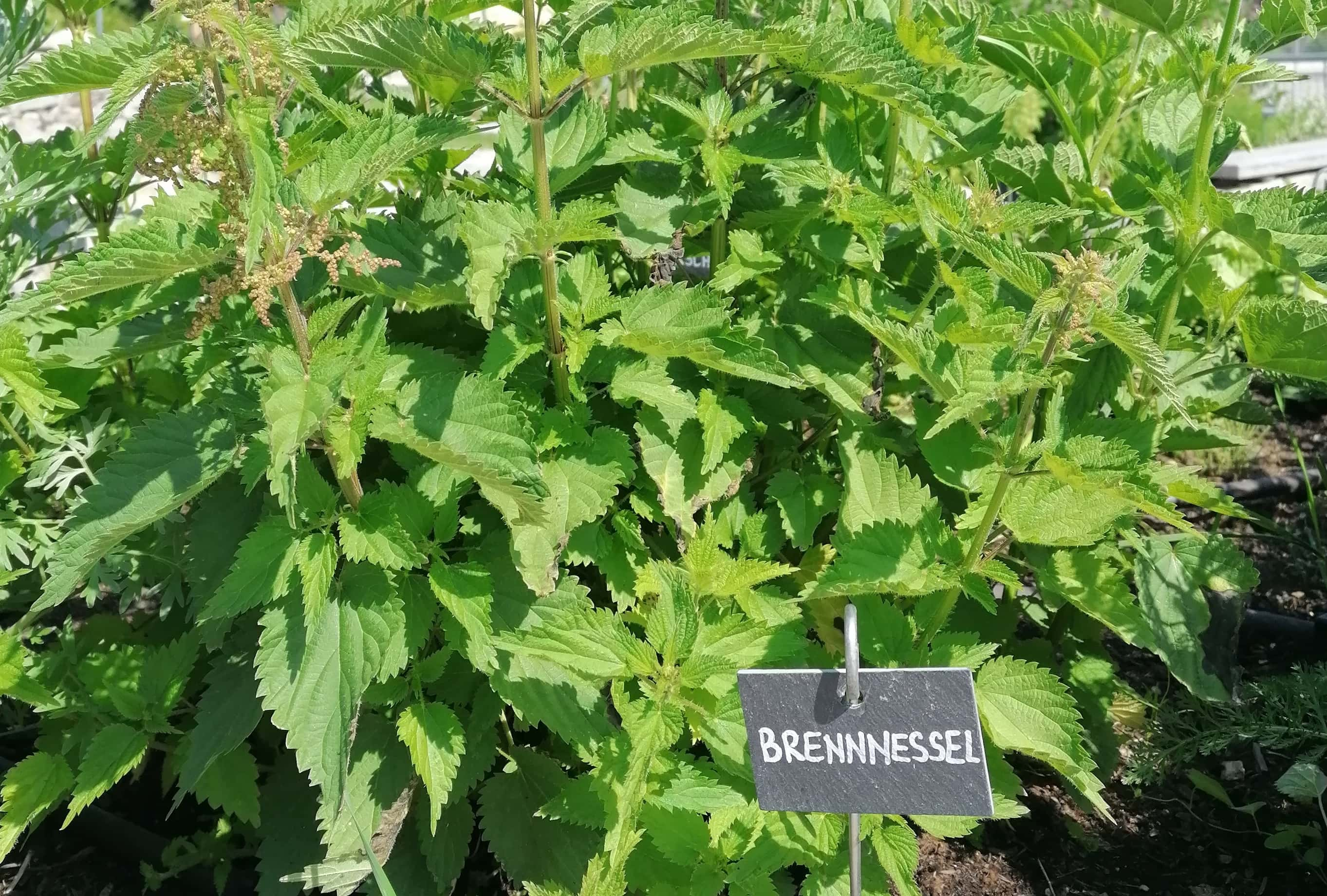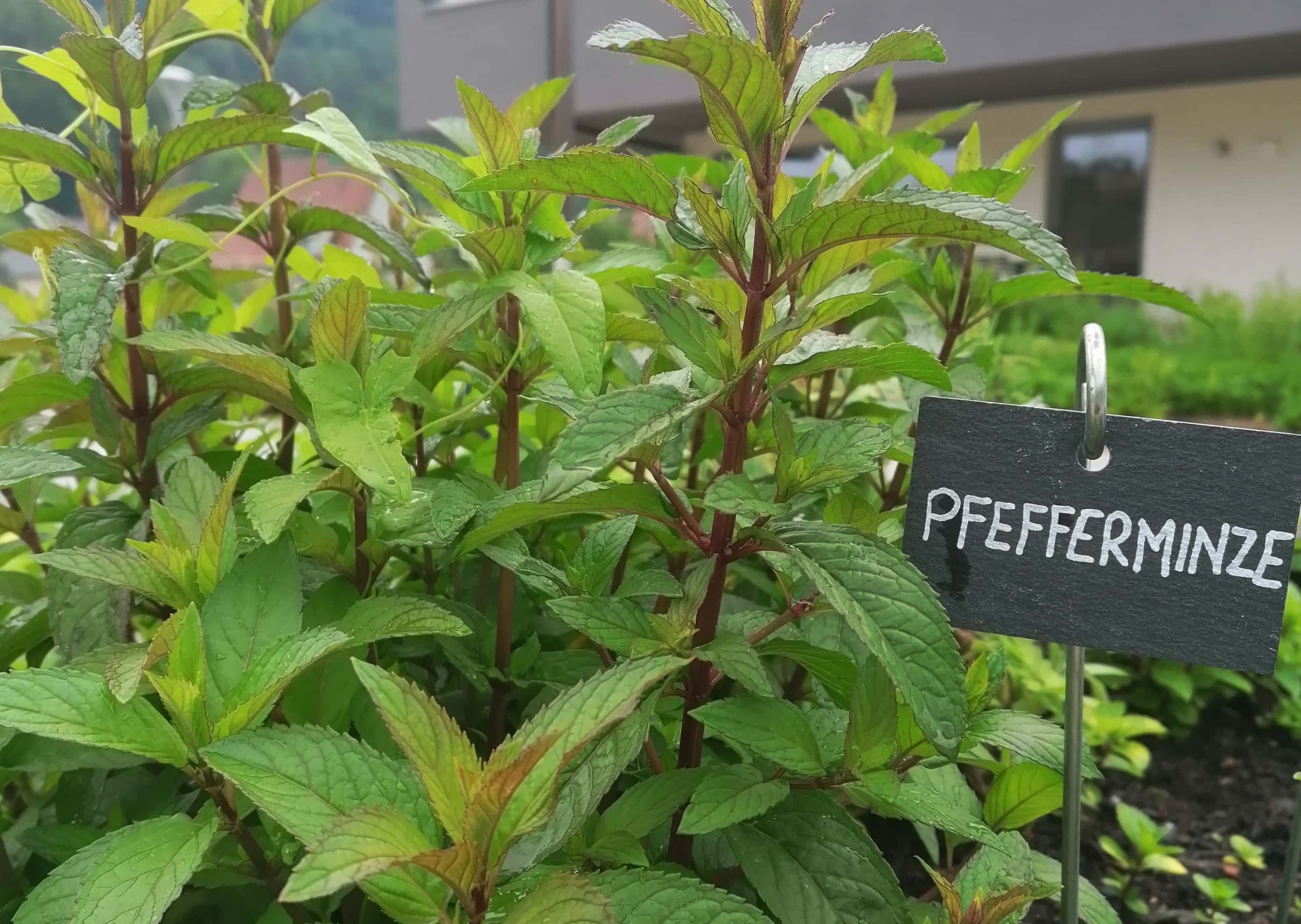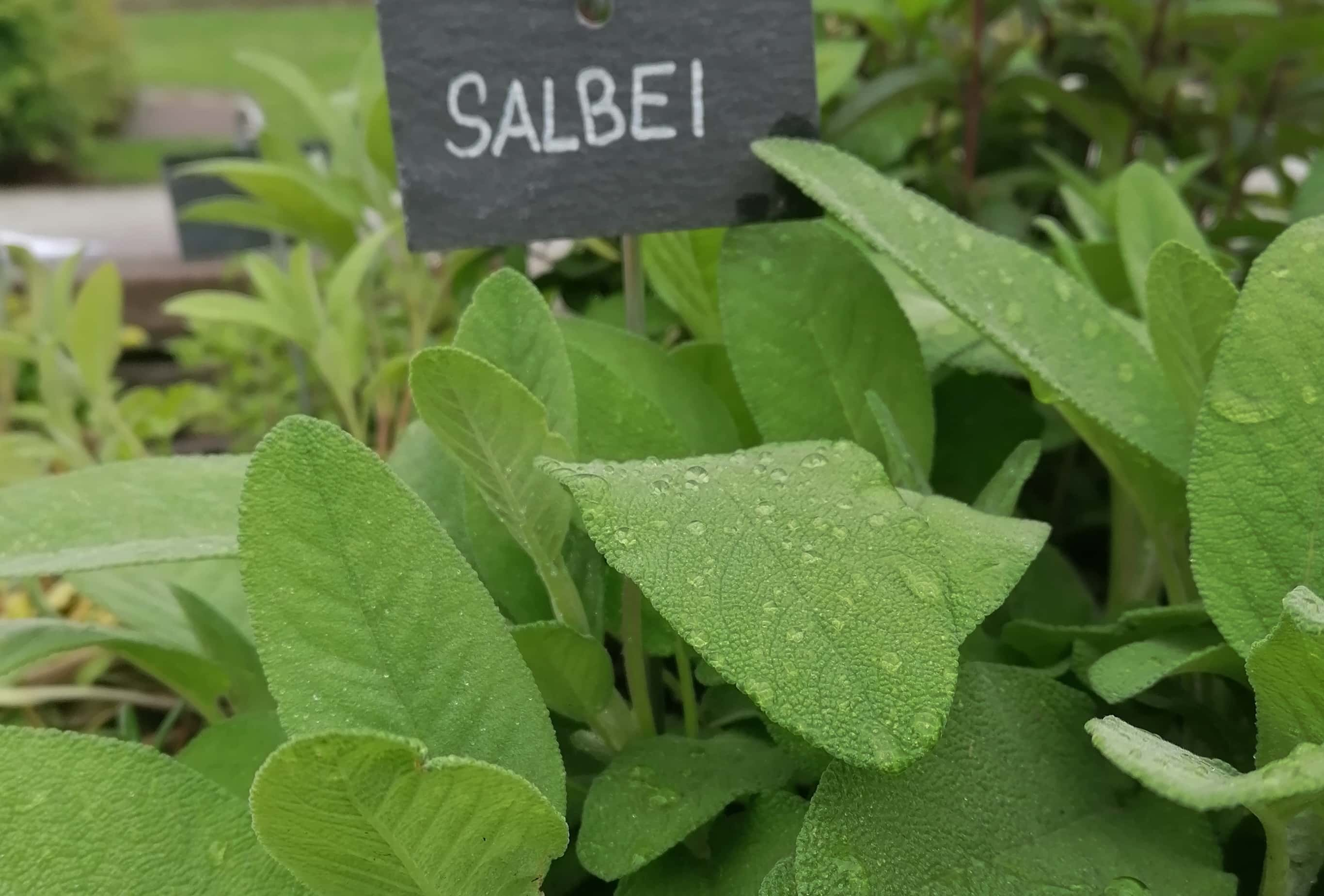
In line with our philosophy, we can use the herbs and medicinal plants to expand our range of therapies with the power of nature based on scientific findings.
In addition to the culinary use in the Nuhr Cuisine, we also prepare various homemade giveaways from them. Of course, as visitors to our therapy garden, you can use parts of the plants yourself to smell, scratch, touch and taste.
Our dietician has created a herb and medicinal plant primer for you, in which you will learn a lot of valuable knowledge about our culinary, wild and medicinal herbs, as well as about some poisonous representatives.
Our own bees, whose hives are located to the right of the therapy garden, are responsible for pollination.

Botanical name: Symphytum officinale
Drug name: Symphyti radix
Folk name: legwort, glotwort, rabbit's bread, medicinal root, skybread, honeyblum, dog's tongue, milkroot, comfrey, blackroot
Gathering time: spring and autumn
Parts used: young leaves, root
Ingredients: analgesic, anti-inflammatory, decongestant, wound cleansing, soothes irritation, promotes rapid restoration of mobility, promotes wound healing

Botanical name: Urtica dioica, urens
Drug name: Urticae herba/folium/radix
Folk name: thunder nettle, hemp nettle
Collection time: young leaves from March to October, root from spring to fall
Parts used: leaves, seeds and root
Effects, properties: diuretic, metabolism stimulating, anti-inflammatory, immunomodulating, alkaline

Botanical name: Mentha x piperita
Drug name: Menthae piperitae folium/aetheroleum
Vernacular name: field mint, field mint, fleabane, garden mint, deer mint, motherwort, cat balm, house mint
Gathering time: Summer
Parts used: leaves and flowers
Effects, properties: antispasmodic, emetic, analgesic, digestive, bile flow stimulant, antiseptic, antiseptic, expectorant, cooling, local anesthetic, disinfectant, circulatory, antibacterial, antiviral, antifungal

Botanical name: Salvia offincinalis
Drug name: Salviae folium
Folk name: precious sage, garden sage, royal sage, motherwort, tooth leaves
Gathering time: June to August
Parts used: leaves
Effects, properties:
Internally: digestive, antiperspirant, appetizing, stimulates secretion, makes fatty foods more digestible, antispasmodic, promotes bile flow, relieves diarrhea
Externally: Germicidal, antibacterial,
fungistatic (inhibits fungal growth),
virustatic (inhibits viruses),
astringent (astringent), promotes wound healing, hemostatic,
antioxidant, anti-inflammatory